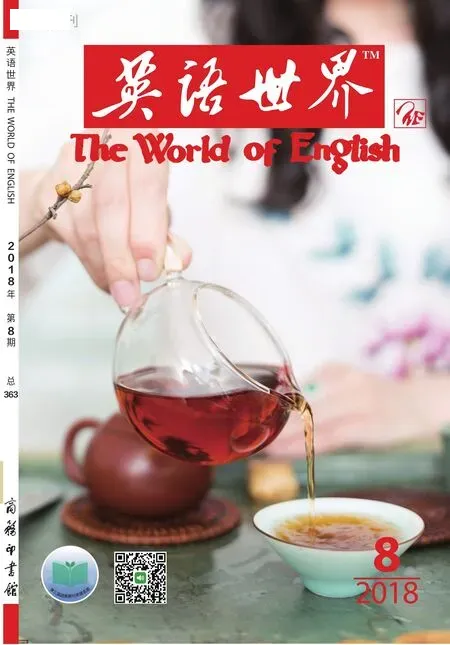Tea: A Very Short History
The tea plant is generally assumed to be indigenous to southwest China, although the debate on the original birthplace22 birthplace出生地;发源地。of tea is still open. What is commonly accepted as the earliest reliable reference to tea-drinking in China is to be found in the biography of Wei Yao in theSanguozhi(History of the Three Kingdoms). The episode, which can be dated3be dated to追溯到。between 264 and 273 AD, is well known: Wei Yao, when invited to Sun Hao’s banquets, was secretly given tea instead of the enormous amounts of wine4译文查考并引用了史料,因此与原文并不完全对应。each guest was expected to put up with55 put up with忍受。on such occasions. There are actually some other earlier references to tea-drinking,which scholars usually dismiss66 dismiss不考虑;解散;开除。as unreliable (from a textual point of view) or not relevant to7be relevant to与……有关。the point (they refer to tea as food or medicine,not as a recreational88 recreational休闲的;消遣的。drink). It is not until the Tang dynasty that teadrinking becomes a nationwide custom from south to north.
一般认为,茶树原产于中国西南,尽管关于茶的发源地仍然众说纷纭。中国饮茶公认的最早信史见于《三国志·韦曜传》。这段历史颇为著名,可追溯到公元264年至273年:孙皓邀韦曜赴宴,宾客每宴饮酒必以七升为限,孙皓密赐韦曜荼荈以代酒。其实,还有其他一些更早的饮茶记载,学者通常斥为伪书(从文本角度)或与茶无关(这些材料称茶为食材或药材,而非饮品)。及至唐代,饮茶才成为风靡全国、南北皆盛的习俗。
[2] Two factors contributed to the diffusion9diffusion扩散;传播。of the custom: the rise of Chan Buddhism and the appearance of theChajing(The Classic of Tea),by Lu Yu10陆羽,湖北天门人,唐代著名茶学家,以《茶经》闻名于世。(733–804), compiled11compile编纂;汇编。between 758 and 760. This monograph12monograph专著;专论。on all aspects of tea culture was the fi rst book ever devoted to the subject. TheChajingis part of a corpus13corpus全集;语料库。of monographs on tea, theChashu, which from the Tang to the Qing numbers over 100 titles and is one of the most important sources for the history of tea in China.
[2]两大因素促进了茶风的流播:禅宗的兴起与陆羽(公元733—804)《茶经》的问世(编于公元758年至公元760年)。这是现存第一部全面论述茶文化的专著。论茶总集《茶书》收录自唐至清的百余部茶书,是研究中国茶史的最重要资料,《茶经》也在其中。
[3] Chan adepts14adept专家;能手。would use tea for its stimulant15stimulant刺激的;使人兴奋的。properties16property财产;特性。to keep mentally alert during meditation17meditation冥想;打坐。, and would always carry their tea utensils with them. In 770, an of fi ce of tribute18tribute致敬;贡品。tea was set up to deal with tea for court consumption. At the same time, the nomadic tribes19nomadic tribe游牧部落。from the area north of China had taken up the habit of drinking tea, for which they bartered their celebrated horses20“ 茶 马 互市”起源于唐、宋时期,是中国西部历史上汉藏民族间一种传统的以茶易马或以马换茶为中心内容的贸易往来,实际上是朝廷在西部游牧民族中尚不具备征税条件的地区实行的一种财政措施。bart. The Song dynasty saw the rise to prominence21rise to prominance崛起;崭露头角。of Fujian province as a tea-growing region, the establishment of several tea gardens for imperial222 imperial帝国的;皇家的。consumption (the most famous among which was in Beiyuan in Jianzhou, present day Fujian Province), and the creation in 1074 of the tea and horse agency23tea and horse agency茶马司。, responsible for the bartering of tea for horses, which became a permanent fixture24fixture固定装置;定期存款。of regional government, playing a vital part in the economy.The Ming-Qing period saw a progressive25progressive逐渐的;不断前进的。reduction of the ancient teatax (established in 973), which led to its abolition26abolition废除。in recognition of27in recognition of鉴于;考虑到。the fact that tea had become necessary to the people and therefore a traditionally tax-free item.
[3]因茶有提神之效,禅士参禅打坐,常饮茶醒脑,出则自携茶具。公元770年,唐朝设御用贡茶院。同时,中国北方游牧部落嗜茶成风,常常以名马市茶。福建产茶,名噪宋时,修御茶园数座(其中建州北苑的茶园最为著名,建州即今福建省)。公元1074年,设茶马司,管茶马贸易事,成地方定制,多裨国帑。明清之际,旧茶税(始于公元973年)有趋减之势,况因茶为百姓日用所需,按例属无税之物,始得蠲除。
[4] Tea has been manufactured throughout Chinese history in the following forms: cake tea, powder tea, and loose leaf tea. The history of tea-brewing techniques can be divided into three, partly overlapping28overlapping重合。,phases: (1) boiled tea (zhucha, at Tang times), (2) whipped29whip搅拌;抽打。tea (mocha,at Song times), (3) steeped tea (paocha, from Ming onwards).
[4]中国制茶历史悠久,有饼茶、末茶、散茶诸种。茶道之史,可分三期,间或诸法兼用:唐代为煮茶,宋代为抹茶,明朝以降为泡茶。
[5] The fi rst phase is described in a detailed fashion in theChajing.According to Lu Yu30译文引用了《茶经》原文,语序略有调整。, tea cakes were dried by fi re and stored in paper bags while still warm to retain their fragrance. Once cooled, they were ground into3131 grind sth into将……磨成。a fi ne32fine纤细的;精细的。powder. When the water would begin to boil and‘ fi sh-eye-like’ bubbles appeared, a pinch of salt was added for fl avour.As soon as the bubbles ‘linked together as pearls in a necklace’, a ladle of water was removed from the cauldron333 cauldron大锅;海釜。for later use. The boiling water was stirred with a pair of bamboo sticks in a circular motion, and tea powder added to the centre of the ripple. When the water reached a full boil, making the sound of ‘drumming waves’, the water ladled out earlier was returned to the cauldron to lower the temperature and stop the boiling. When a froth appeared on the surface, the tea was ladled into bowls and served.
[5]《茶经》对唐代煮茶道有详细描述。根据陆羽的说法,“茶饼以火炙之,既而,承热用纸囊贮之,精华之气无所散越,候寒末之。其沸,如鱼目,微有声,为一沸,则水合量,调之以盐味。缘边如涌泉连珠,为二沸,出水一瓢,以竹环激汤心,则量末当中心而下。腾波鼓浪,为三沸,有顷,势若奔涛溅沫,以所出水止之,而育其华也。凡酌至诸碗,令沫饽均。”
[6] The Song dynasty marked a new chapter in the history of tea with the diffusion of the whipped tea method34即“点茶法”,是两宋饮茶的主流形式,程序为炙茶、碾罗、烘盏、候汤、击拂、烹试,其关键在候汤和击拂。汤瓶置风炉上取火候汤,点茶水温为初沸或二沸,过老过嫩皆不好。熁盏令热,用茶匙量取茶粉入茶盏,先注汤少许,调成膏状,然后边注汤边用茶筅环搅,待盏面乳沫浮起是谓茶成。点茶法曾传播到日本、韩国、朝鲜,对日本抹茶道和高丽茶礼有较大的影响。. Whipped tea is prepared from tea cakes made from compressed35compress压缩。tea powder, and are much fi ner than the Tang tea cakes made from leaves crushed in a mortar36mortar臼;研钵。. Song tea was prepared by re-grinding the tea cake into fi ne powder, placing the powder in a bowl, pouring boiling water into the bowl from an ewer37ewer大口水壶;水罐。, and whipping the mixture with a whisk.
[6]宋朝兴抹茶之法,实开茶史新章。茶末压缩成饼,茶饼制成抹茶,较唐时臼捣之茶饼更为精细。宋人饮茶,复碾茶饼成细末,盛入茶碗,提汤瓶以沸水注之,兼以茶筅搅击。
[7] With the beginning of the Ming dynasty, tea cakes went out of production (with the exception of those needed for barter trade with nomadic tribes), and loose tea leaves came into use. Ming tea is brewed by pouring boiling water over leaves placed in a vessel38vessel(旧时提水用的)大口水壶。. The emergence of the steeping method brought signi fi cant changes to tea ware, such as the introduction of the tea-pot. The Qing dynasty brought no substantial changes in the process of tea-brewing, whereas the manufacture of tea ware fl ourished in this period as never before (purple clay-ware in Yixing,polychrome39polychrome彩饰的。wares400 ware制品;器皿。in Jingdezhen).
[7]明初罢造茶饼(除供茶马互市之用外),遂开散茶之风。明人泡茶,取茶叶置一瓯内,以沸水冲之。此浸泡法行世,致茶具巨变,如茶壶之使用。清代泡茶法,变化甚微,唯茶具制造之盛,非前代能比(宜兴紫砂壶、景德镇彩陶)。
[8] From the point of view of manufacture, a new procedure was de-vised early in the Qing dynasty by tea manufacturers in the Wuyi district of Fujian. Instead of steaming or frying the leaves right after picking,they would allow the leaves to wilt41wilt枯萎。and partially ferment42ferment发酵。, before heating them to stop the fermentation. Tea processed in this way is known asWulong(Oolong). The manufacture ofWulongtea led to a new method of tea brewing known asgongfutea. According to this method, tea leaves are steeped in dainty43dainty精致的。teapots, and served in tiny cups, often the size of a nutshell44nutshell坚果;核桃。. ■
[8]就制茶而论,清初福建武夷山区茶贩创一制茶新法。茶贩采茶后不予蒸炒,任叶萎凋至半发酵,后焙火止酵。此法所制之茶名曰乌龙茶。乌龙茶制成后,生一泡茶新法,名曰工夫茶。根据此法,茶叶浸于雅壶内,以小盏斟饮,盏大小常若核桃壳。 □

